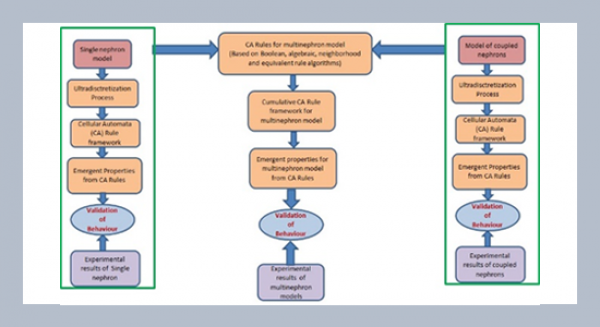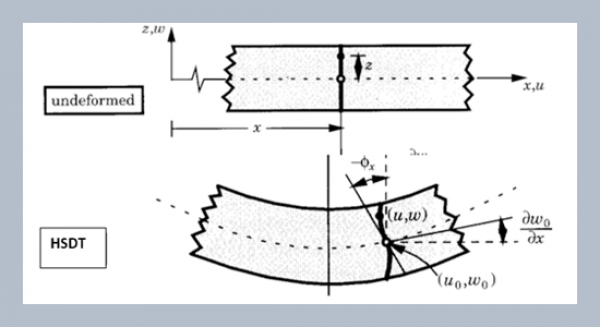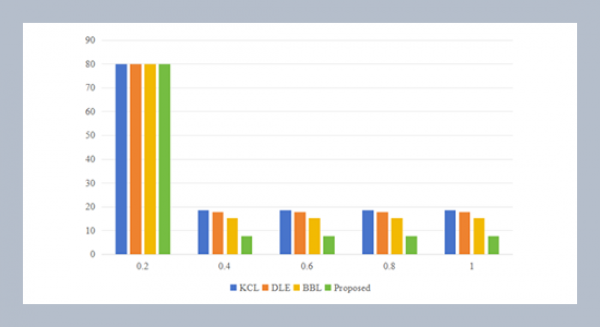Kaixiang Yan and Xuncheng Huang* Yangzhou Polytechnic University, Yangzhou, Jiangsu 225009, China
Download Citation:
|
Download PDF
A cubic system, which is a generalization of the predator-prey models, studied byA cubic system, which is a generalization of the predator-prey models, studied bymany authors recently (see [1,2], for instance) is proposed. The properties of the equilibriumpoints, the Hopf bifurcation and the stability of the periodic solution, due to the bifurcation areinvestigated.ABSTRACT
Keywords:
cubic system; predator-prey; Hopf bifurcation; periodic solution.
Share this article with your colleagues
[1] Shen, C. and Shen, B. Q. 2003. A necessaryand sufficient condition of the existence and uniqueness of the limit cyclestence and uniqueness of the limit cyclesfor a class of prey-predator system withspassing effect, Journal Biomathematics,182: 207-210.REFERENCES
[2] Zheng, J. B., Yu, Z. X., and Sun, J. T.2001. Existence and uniqueness of limitcycle about prey-predator system withsparssing effect, Journal Biomathematics,16, 2 : 156-161.
[3] Gavrilov, L. 2001. The infinitesimal 16thHilbert problem in the quadratic case,Inventiones Mathematicae. 143:449-497.
[4] Ilyashenko, Y. and Yakovenko, S. 1995.“Concerning the Hilbert 16th problem”,Transactions of American MathematicalSociety, Series 2, 165, Providence, R.I.,U.S.A.
[5] Li, B. Y. and Zhang, Z. F. 2001. A noteon a result of G. S. Petro about the weakened16th Hilbert problem, Journal ofMathematical Analysis and Applications,190 : 266-271.
[6] Qian, Y. X. 1985. “On Integral SurfacesDefined by Ordinary Differential Equations”,Northwest University Press, Xian,China.
[7] Roussaire, R. 1998. “Bifurcations ofPlanar Vector Fields and Hilbert’s SixteenProblem”, Springer-Verlag, NewYork, U.S.A.
[8] Wang, S. S. 2004. Toward the answer tothe second part of Hilbert’s 16th problem,World Journal Engineering, 2: 32-40.
[9] Ye, Y. Q., Wang, S. L. and Yang, X. A.1986. “Theory of Limit Cycles”, AmericanMathematical Society, Providence, R.I., U.S.A.
[10] Huang, X. C. 1990. Limit cycles in acontinuous fermentation model, Journalof Mathematical Chemistry, 5: 287-296.
[11] Pilyugin, S. S. and Waltman, P. 2003.Multiple limit cycles in the chemostatwith variable yield, Mathematicae Bioscience,182: 151-166.
[12] Bell, G. I. 1973. Predator-prey of equationssimulating an immune response,Mathematical Bioscience, 16: 291-314.
[13] Huang, X. C. and Merrill, S. 1989. Conditionsfor uniqueness of limit cycles ingeneral predator-prey system, MathematicalBioscience, 96: 47-60.
[14] May, R. M. 1972. Limit cycles in predator-prey communities, Science, 177:900-902.
[15] May, R. M. 1974. “Stability and Complexityin Model Ecosystems”, PrincetonUniversity, Princeton, NJ, U.S.A.
[16] Huang, X. C. Wang, Y. M. and Cheng A.S. 2006. Limit Cycles in a Cubic Predator-Prey Differential System, Journal ofthe Korean Mathematical Society, 43:1-15.
[17] Kuno, E. 1987. Mathematical models forpredator-prey interaction, Advances inEcological Research, 16: 252-265.
[18] Zhang, J. 1987. “The GeometricallyTheory and Bifurcation Problem of OrdinaryDifferential Equation”, PekingUniversity Press, Beijing, China.
ARTICLE INFORMATION
Accepted:
2006-12-20
Available Online:
2006-12-01
Yan, K., Huang., X., 2006. Hopf bifurcation in a generalized Predator-Prey model. International Journal of Applied Science and Engineering, 4, 253–258. https://doi.org/10.6703/IJASE.2006.4(3).253
Cite this article:















